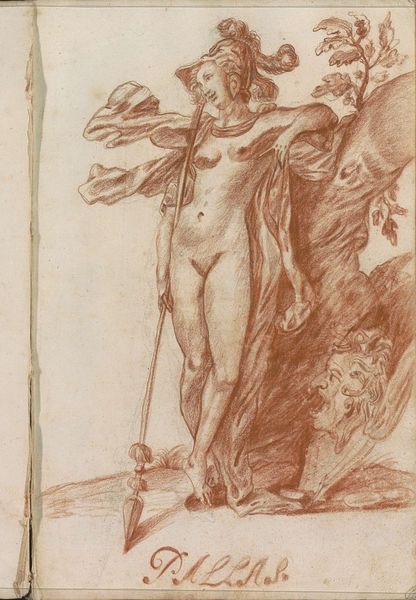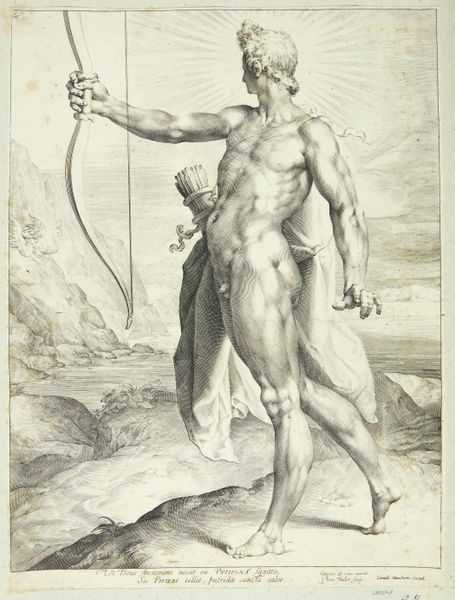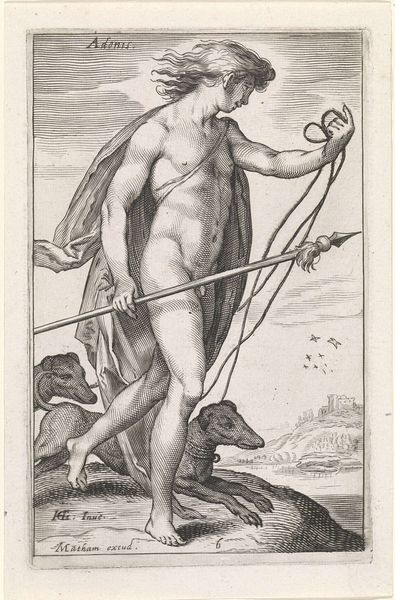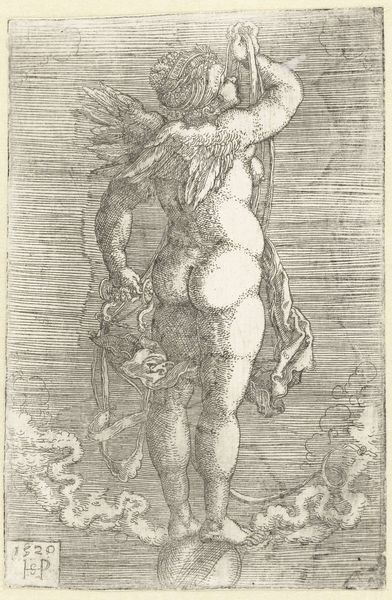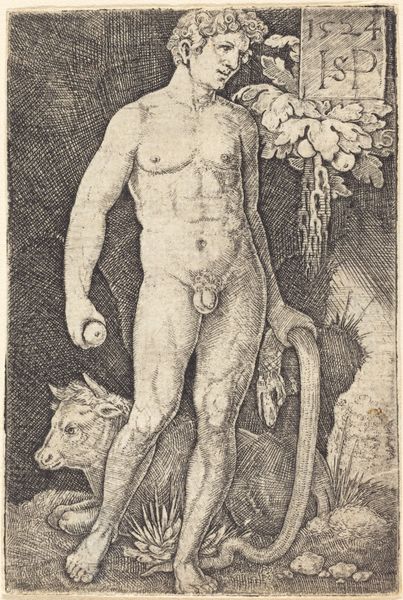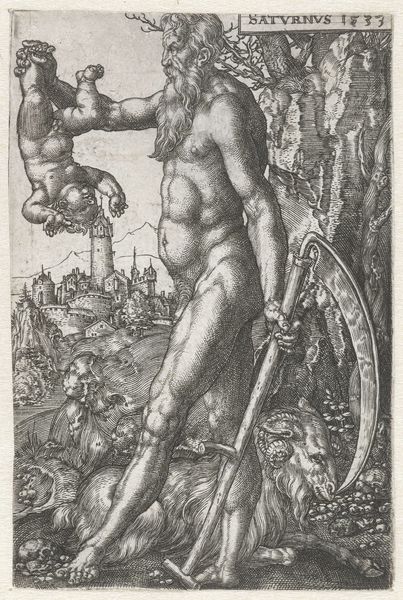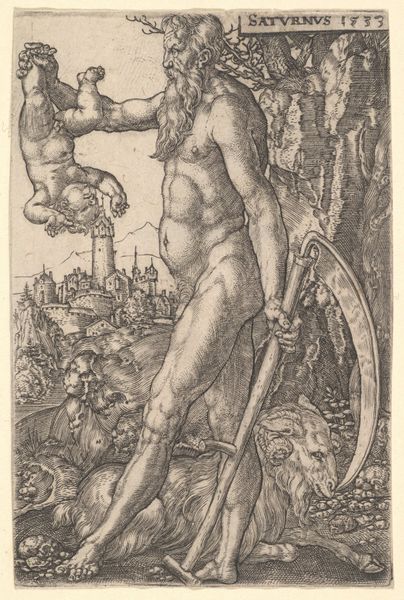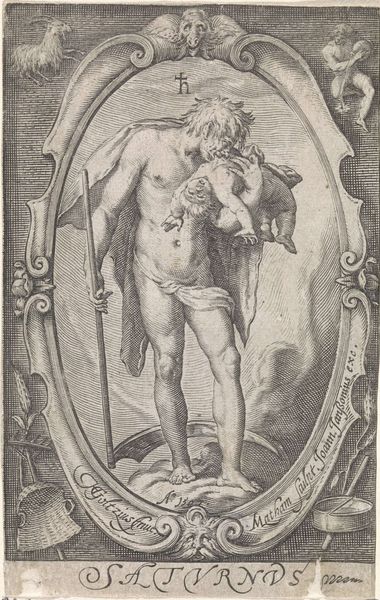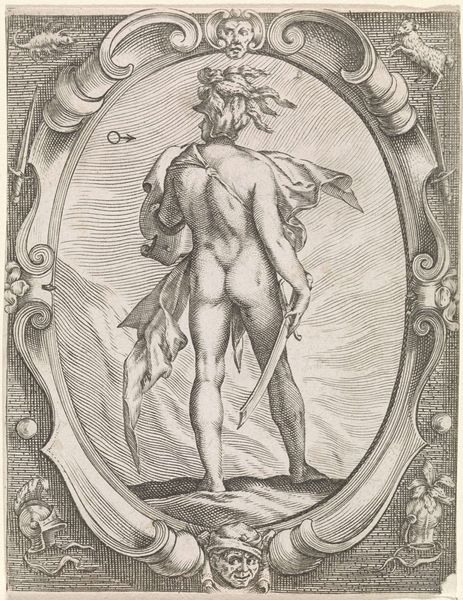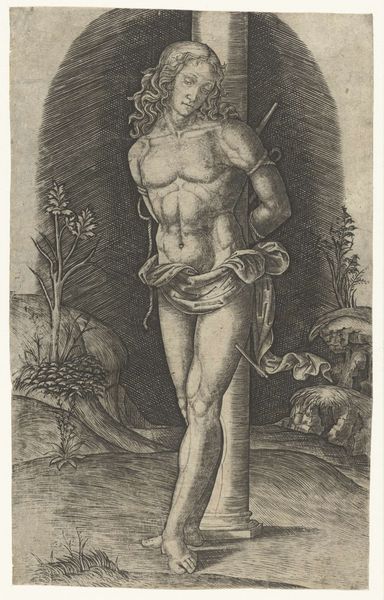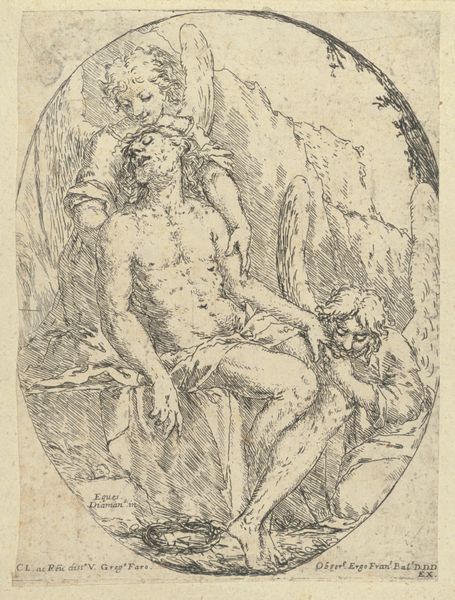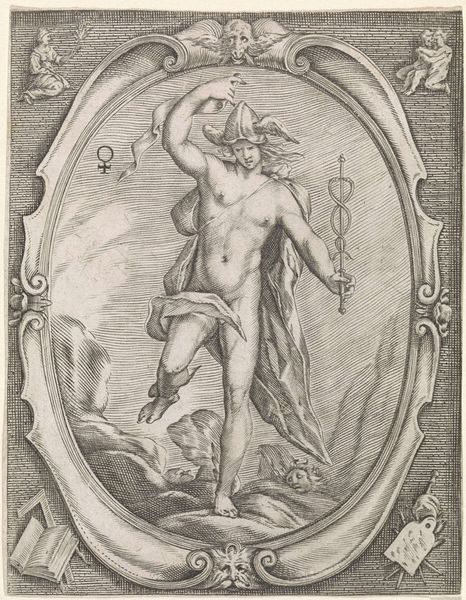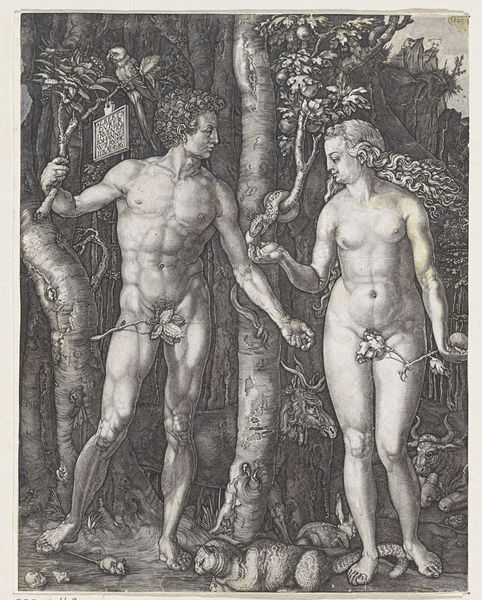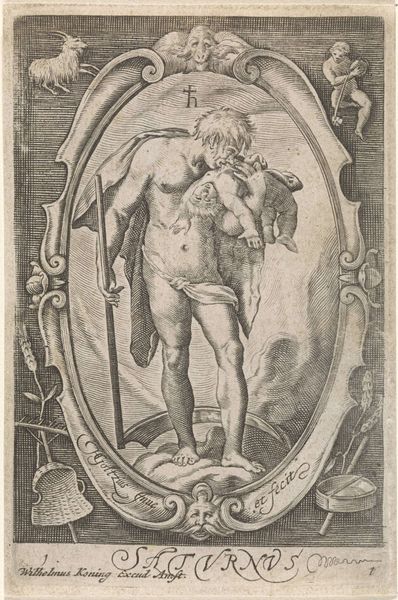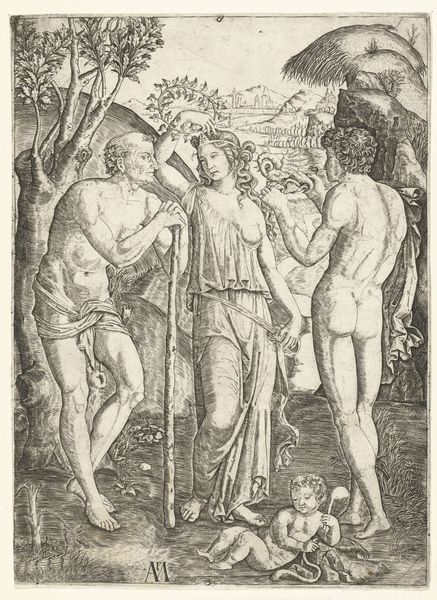
drawing, print, engraving
#
portrait
#
drawing
# print
#
charcoal drawing
#
figuration
#
11_renaissance
#
roman-mythology
#
pencil drawing
#
mythology
#
line
#
history-painting
#
italian-renaissance
#
nude
#
engraving
Copyright: Public domain
Editor: Here we have Albrecht Dürer’s "Apollo" from 1504, a print utilizing engraving techniques. It has such an ethereal, almost unsettling mood for a depiction of a god, doesn’t it? What draws your attention when you view it? Curator: It's fascinating to consider Dürer's workshop practices and how the reproduction of this image would have affected its reception. Engraving, as a printmaking technique, democratized art to some degree. Consider the paper itself: where did it come from, who made it, and how did that labor impact the final product’s value and meaning? What implications does the reproducible nature of the print medium have on our understanding of originality and artistic creation in the Renaissance? Editor: That's a very different lens than I was expecting! It's true, I tend to get caught up in the imagery. Curator: And what a loaded image! A classical figure made available for wider consumption. Let's think about the copperplate: the artist’s labor to produce the matrix. Do you think Dürer considered the accessibility of the final image, given the effort involved? Editor: So, rather than just the artistic skill, we should be thinking about the entire production line, almost? Curator: Exactly. The availability of paper, the skill of the printer, even the distribution networks all contribute to how the art was received and understood. It’s not just about the genius of Dürer; it’s about the whole system. Editor: It definitely makes me appreciate the print more as a manufactured object, embedded within a specific economic and social environment. Curator: It's easy to focus on iconography and artistic talent, but really engaging with art history requires an investigation into those material conditions that enabled the art to exist and circulate. Editor: That’s a really insightful way to look at art; I’ll certainly keep that in mind going forward!
Comments
No comments
Be the first to comment and join the conversation on the ultimate creative platform.
